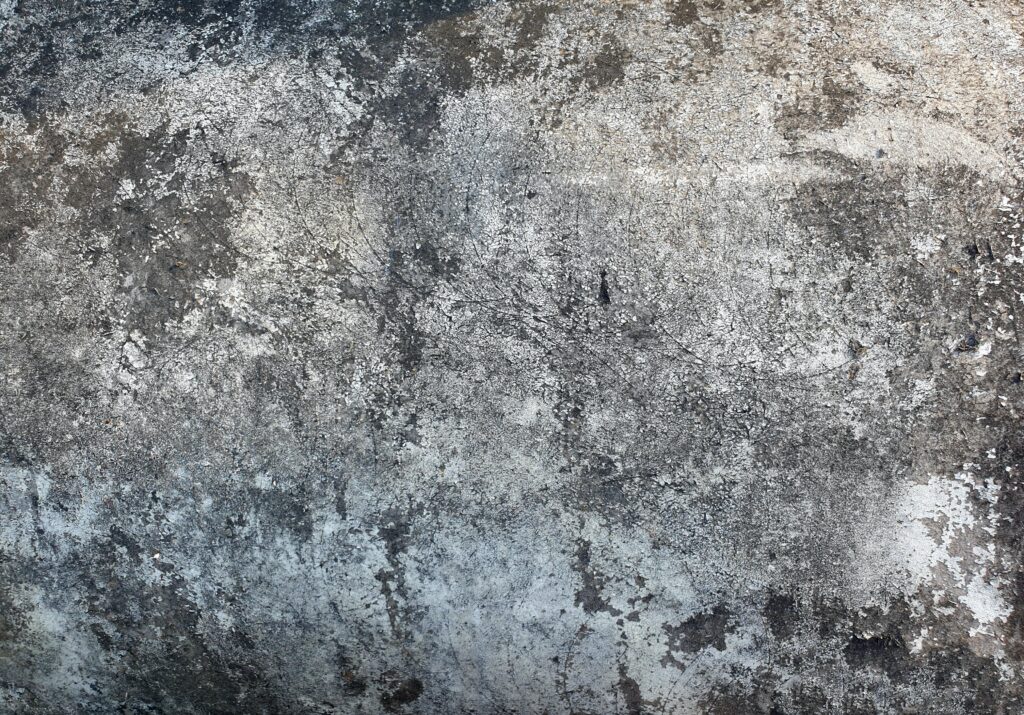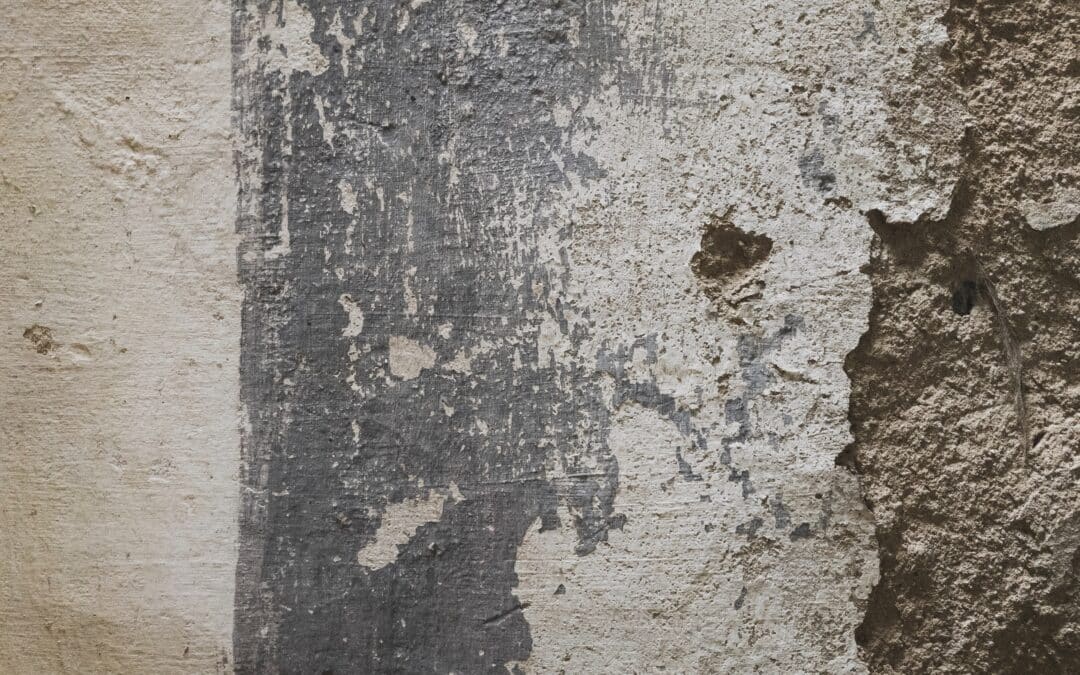Concrete spalling happens. It is the disintegration of concrete caused by chemical reactions or natural weathering that causes chunks of cement to chip off the main body, often leaving fragmented, damaged concrete. In frigid climates where ice occurs, like we experience in Calgary, a type of erosion called freeze-thaw weathering takes place.
There are a couple of causes for spalling concrete
And of course, solutions to fix spalling. Nothing is more aggravating than applying a lot of paint only to discover later that it did not adhere adequately. The concrete paint is often considered to be subpar. Although there are variances in paint quality, it is still possible to see broken concrete. The same effect takes place on reinforcing steel bars, corroded steel bars also spall.
The causes of concrete spalling
One cause of concrete spalling may be the weather. Concrete contains pores. Consequently, if you reside in a colder region, freezing may be a significant cause of spalling concrete. Without a covering, freezing seeps into the cement’s capillaries and may cause expansion.
Paint on a concrete surface that has completely peeled off locally
Also known as deteriorated concrete is called concrete spalling. This is brought on, among other things, by the paint on the concrete surface, being under strain or the substrate’s structure changing (due to the weather, for example). Other causes include the development of moisture or gas or the use of paint on an overly damp surface. Alternatively, the paint may break due to the substrate’s weakness, the paint’s lack of elasticity, or the application of many layers of paint that are incompatible with one another (water and turpentine carried by each other for example).
Paint failing to adhere on concrete horizontal surfaces
This might be caused by two general factors. The paint’s rapid drying time might be the first factor. This happens a lot while you are painting in the sun. The paint then peels off because the layer dries too rapidly. The wall being overly moist is the other explanation. The paint then comes free because the bond between the wall and paint is too weak.
How to prevent spalling concrete?
Concrete spalling prevention can be done by many ways: patching material, concrete sealing, a better structural integrity of the concrete surface, but also the concrete structure and the concrete thickness matter. One of the aforementioned possibilities is most likely the reason for the spalling concrete. It is essential to study the suggestions below in order to solve this issue and avoid it moving forward.
Always check the substrate
If you see that the paint is coming free off. Therefore, pre-treatment is essential. Cleaning the surface is the first step in this process. We cannot emphasize this enough: if you want the paint to stay where it is, a degreaser does wonderfully. A wall filler may be used to fix any unevenness on the wall, so be sure you do that as well. Order a tarp as well to shield the furniture and floor from paint spills.
Concrete spalling: the repairing process and the repair material mixture
So much for the planning; with the help of these suggestions, flaking or loosening paint will be a thing of the past. Painting time has come. Do this preferably in vertical and horizontal stripes, working from the corners to the center.
After you’re done painting the finished surface, give the paint time to gently dry on the wall. On the container or in the product specifications, the paint’s drying time is noted. Do not use a fan or hair dryer to hasten the drying process; instead, let nature to do its job.
Want some further advice to make sure concrete spalling does not occur?
Contact Concrete Experts: the experts for concrete repair, you can always contact us for help! Our experts will be pleased to assist!

Surface repair material – how to fix spalling concrete?
Is the paint on your concrete chipping off? Finding out the root of the problem is crucial to solving it. Remove the paint if you can. A paint scraper works well for removing flaking paint. Taking care of the substrate is also necessary for flaking paint.
Typically, a poorly prepared surface is to blame for this
It may also be as a result of the paint being applied on a wet surface. If polyester has been used to patch up any holes, paint may also come loose.
The pre-treatment causes the concrete paint to spall. A concrete floor’s pretreatment is essential. Degreasing, sanding, or blasting the surface are examples of this. You must carry out this task in accordance with the paint’s instructions. The finest adhesion is guaranteed by a floor that has been adequately prepped. A primer is often also suggested. This pretreatment product provides a foundation coat for the floor. The top coat’s adherence is strengthened by this primer.
The preparation includes filling up any gaps or cracks
It is advisable to use putty that is not based on polyester rather than polyester putty. Polyester is prone to separation because it readily absorbs moisture.
Another recognized cause is moisture. It is advisable to wait until the floor has fully dried before applying concrete paint. The problem with new concrete flooring is this: condensation may sometimes result on a chilly night. To achieve this, evaluate the floor’s moisture content before painting. Generally speaking, fresh concrete shouldn’t be coated until six to eight weeks after it has been poured.
Old paint layers cause loosening of concrete paint
The improper operation of the paint system may sometimes be the cause of concrete paint discharge. For instance, you can be painting over an old coat of paint that clashes with the fresh one. Therefore, it is preferable to remove previous paint coats, particularly if you are unsure of the kind that was applied.
There are three ways to remove concrete spalling
It’s crucial to remove previous coats of concrete paint before applying one to the floor again. It is possible to remove concrete paint on your own and is not always essential to hire a professional to do it. Do you wish to take care of removing the concrete paint yourself? There are three approaches you may take:
1. Sand concrete to remove any paint
The best method for removing old concrete paint is sanding. Sanding also produces the greatest adhesion when applying the new concrete paint, and it doesn’t release chemicals that are too harmful to the environment or your floor. A diamond sander is used to sand the floor. One can be available for rental from a firm. You may also hire a professional to sand your floor, which has the benefit of often being done nearly dust-free. This reduces the amount of effort needed to prepare for painting.
2. Use a stripper to remove the paint off concrete
This is the simplest choice if you want to remove the concrete paint yourself. However, as not all paint removers are appropriate for removing concrete paint, speaking with a Concrete Expert is advised. Naturally, you should first check to see whether the substrate can withstand the chemicals before you begin. Also thoroughly check the concrete depth.
3. Burning or blow drying concrete paint to remove it
Concrete paint may be removed chemically by sanding or blow drying. Again, not every floor is a good fit for this approach. So, even if you want to burn off concrete paint to remove it, consult a paint expert beforehand to prevent issues. The environmental impact of this removal process is significant.
Regardless of the technique you choose to remove the concrete paint
Make sure the floor is entirely free of any chemicals or dust before re-painting it. This will prevent adhesion issues, allowing you to enjoy a beautifully painted floor for a longer period of time.
Getting assistance may help you avoid issues, particularly if getting rid of the old paint proves challenging. Contacting us is always free and will result in a solution! Concrete Experts is the experts for concrete repair. You can always contact us for help.

